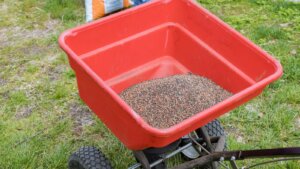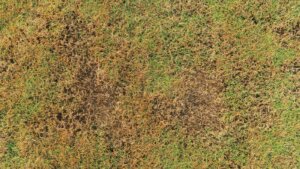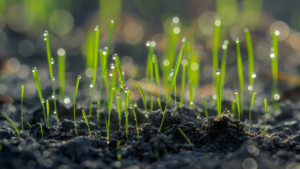What if we told you there’s a battle brewing beneath your feet? Yes, right under the surface of your picturesque lawn, the struggle for air, nutrients, and water rages on. Fear not, we’re here to help you make the right decision when it comes to maintaining your lawn’s health.
In this article, we will discuss the key differences between dethatching vs aerating, and which one is best for your lawn. So, let’s dive in and prepare for battle!
The Great Debate: Aeration vs Dethatching
Understanding the differences between aeration and dethatching is essential for proper lawn maintenance. By comparing their outcomes, you’ll know which method is most suitable for your specific lawn needs.
What is Dethatching?
Dethatching is a process that removes the thick layer of organic debris, known as thatch, from your lawn. Thatch is a combination of dead grass, roots, and other organic matter that accumulates on the soil surface.
While a small amount of thatch can be beneficial, too much can suffocate your lawn, preventing air, water, and nutrients from reaching the roots.
What is Aerating?
Aerating, on the other hand, is a process that creates small holes in your lawn’s soil. These holes allow air, water, and nutrients to penetrate the soil more easily, promoting healthy root growth.
Aeration is particularly helpful for compacted soil or lawns with heavy clay content.
Deciding Between the Two: When to Dethatch or Aerate First
There’s no one-size-fits-all answer when it comes to dethatching vs aerating. The right choice depends on the specific needs of your lawn. Here are some guidelines to help you make the best decision:
Dethatching
- Thatch layer is more than half an inch thick
- Lawn feels spongy when you walk on it
- Frequent watering and fertilizing don’t seem to help your lawn
Aeration
- Soil is compacted
- Lawn experiences heavy foot traffic
- Water puddles on the lawn after rain or irrigation
Lawn Care Tips: Timing and Frequency
Choosing the right time and frequency for dethatching and aerating is crucial for optimal lawn health. Here are some suggestions:
Dethatching
Consider dethatching when the thatch layer is more than half an inch thick. It’s also a good option if your lawn feels spongy when you walk on it or if frequent watering and fertilizing don’t seem to improve your lawn’s condition.
Aeration
Opt for aeration if your soil is compacted or heavy clay. This method is also beneficial if your lawn experiences heavy foot traffic or if you notice water puddling on the lawn after rain or irrigation.
Home Landscaping: Preparing Your Lawn for Aeration or Dethatching
Before you dethatch or aerate your lawn, follow these steps to ensure the best results:
- Mow your lawn to a slightly lower height than normal
- Water your lawn a day or two before the procedure to ensure the soil is moist, but not saturated
- Mark any sprinkler heads or other obstacles to avoid damage during the process
The Verdict: Dethatching vs Aerating
In the battle of dethatching vs aerating, the victor depends on your lawn’s specific needs. Assess your lawn’s condition and choose the right method for a healthy, beautiful lawn that will make you the envy of the neighborhood.
Remember, we’re always here to help with all your lawn care, tree care, and landscaping needs in the Tri-State area. Don’t hesitate to reach out for expert guidance and services tailored to your unique requirements.
Together, we’ll cultivate the lush, vibrant lawn you’ve always dreamed of.



